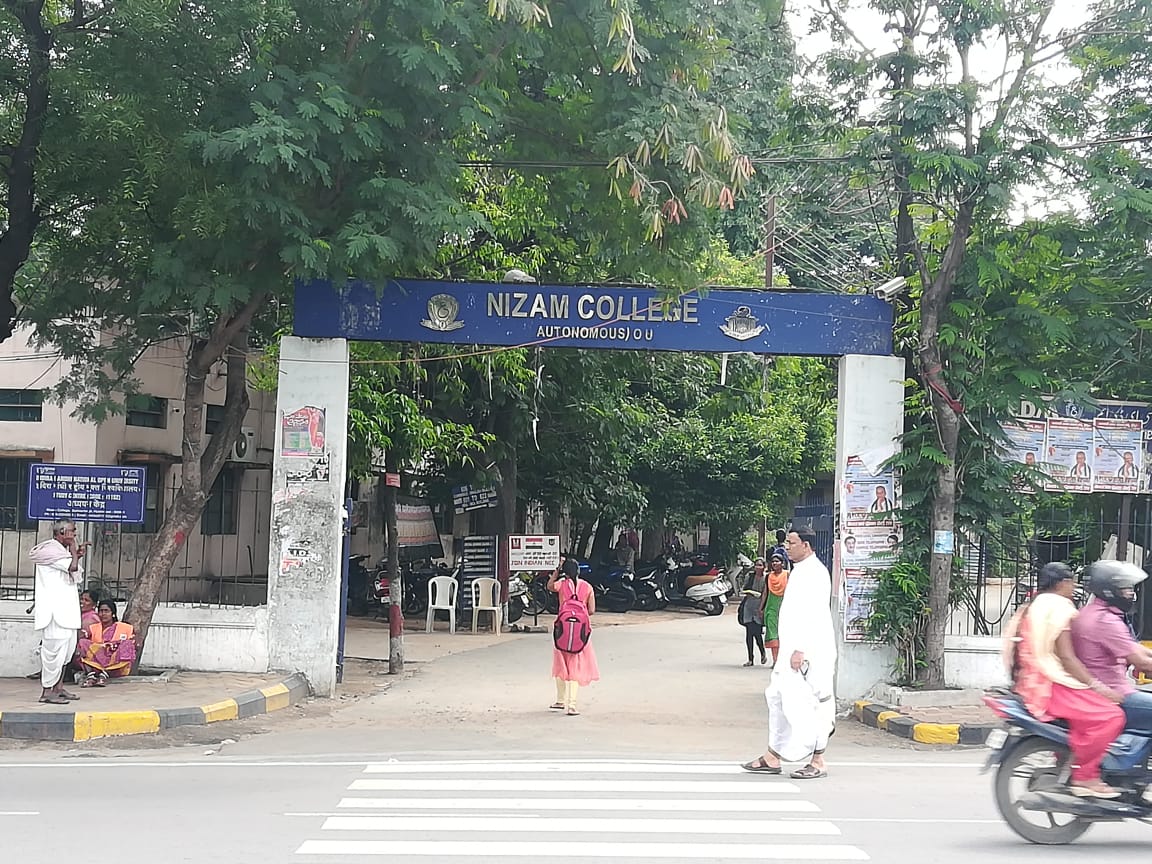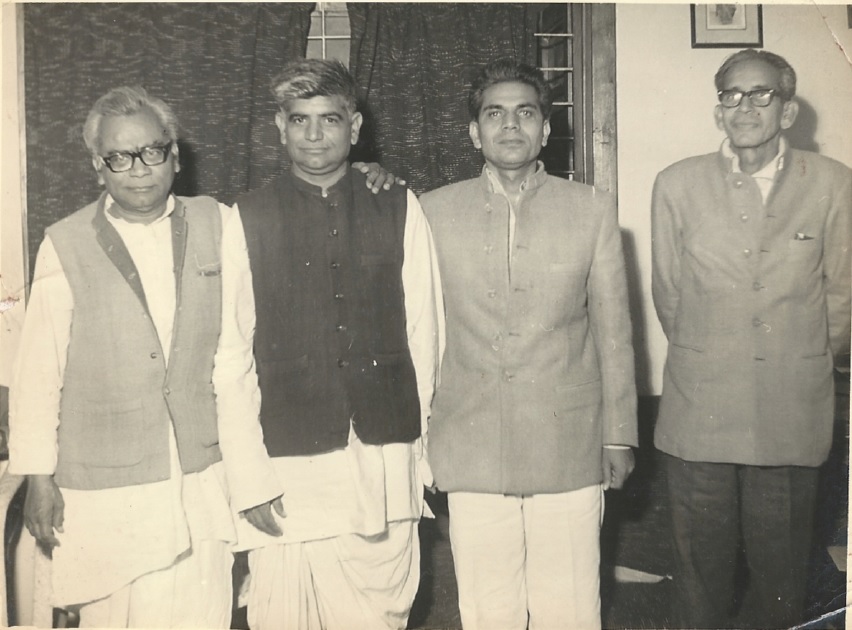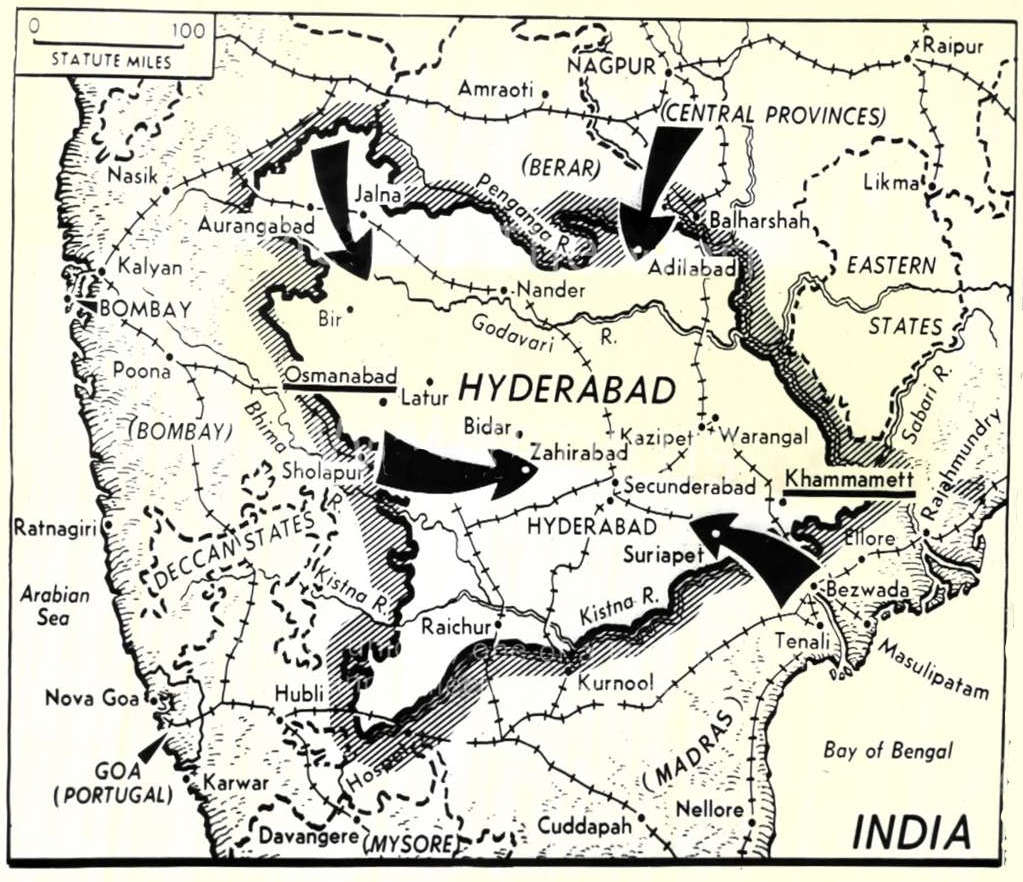|
B. Satya Narayan Reddy
B. Satya Narayan Reddy (21 August 1927 – 6 October 2012) was a freedom fighter, Socialist politician and a former Governor of Uttar Pradesh, Odisha and West Bengal. Reddy died at the age of 85 on 6 October 2012 in Hyderabad. Early life Reddy belonged to an agricultural family from Annaram village Shadnagar in the Mehboobnagar district of Telangana. He was educated at the Nizam College in Hyderabad and graduated in law from the Osmania University. Freedom Fighter Reddy, then only 14, participated in the Quit India Movement in 1942 and was arrested for taking out a students' procession protesting Gandhi's arrest. He later participated in the Hyderabad Peoples' Movement in 1947 where he organised a satyagraha movement against the Nizam's Rule for which he was arrested and imprisoned at the Chanchalguda Jail for 6 months. During his time in prison he edited the ''Payam-e-Nav'', a weekly he circulated among his prison mates. Political career Inspired by Acharya Nare ... [...More Info...] [...Related Items...] OR: [Wikipedia] [Google] [Baidu] |
List Of Governors Of Odisha
The governor of Odisha is the head of state and representative of the president of India in the Indian state of Odisha. The governors have similar powers and functions at the state level as those of the President of India at central level. They exist in the state appointed by the President of India for a term of 5 years and they are not local to the state that they are appointed to govern. The factors based on which the President evaluates the candidates is not mentioned in the constitution. The governor acts as the nominal head whereas the real power lies with the Chief Minister of the State and their council of ministers whereas they acts as the nominal head.The current incumbent is Prof. Ganeshi Lal since 29 May 2018. Governors of Odisha See also * Government of Odisha * Governors of states of India * List of Governors of Bihar and Orissa * List of Governors of Indian states External links * (Governor's Official Residence) {{ ... [...More Info...] [...Related Items...] OR: [Wikipedia] [Google] [Baidu] |
Nizam College
The Nizam College is a constituent college of Osmania University established in 1887 during the reign of Mir Mahbub Ali Khan, Asaf Jah VI, in Basheerbagh, Hyderabad, Telangana. History The Nizampur University College was originally the "Mirsarai" of Nawab Safdar Jung Musheer-ud-Daulah Fakhrul-ul-Mulk II the owner of the grand Errum Mnzil palace. Fakhar ul mulk and Khan-i-Khanan II, were the son's of Nawab Fakhar-ul-mulk I, a noble of Hyderabad. The founder of the college and of several other educational institutions in the Hyderabad State, was Syed Hussain Bilgrami (Nawab Imad-ul- Mulk), who did pioneering work in the field of education as the Director of Education. He scouted and then appointed Dr. Aghorenath Chattopadhyay ( father of Sarojini Naidu, Nightingale of India) as the first principal of the college. The present building, was a summer palace of Paigah Nawab Mulk Fakrul Bahadur, later he gifted the palace to the college administration. Institution This college is ... [...More Info...] [...Related Items...] OR: [Wikipedia] [Google] [Baidu] |
Socialist Party Of India
Socialist Party has been the name of several political parties in India, all of which have their roots in the Congress Socialist Party during the freedom struggle. Background Socialism had a late appearance in Indian politics and this was attributed to a preoccupation on the part of political activists with the independence movement. Differences in class, political perspectives, and economic objectives were set aside in favor of securing freedom from the British colonial rule. Specifically, socialist doctrines were even seen as a liability due to its theme of class conflict, which could have weakened national forces in their struggle for freedom. Once the socialist movement emerged, the Indian concept turned out to be different due to its rejection of the orthodox Marxist dogma or the so-called scientific socialist doctrines that focus on the dictatorship of the proletariat. The Indian model holds that socialism cannot be achieved through the State apparatus. One of its rati ... [...More Info...] [...Related Items...] OR: [Wikipedia] [Google] [Baidu] |
Bhoodan Movement
The Bhoodan movement (Land Gift movement), also known as the Bloodless Revolution, was a voluntary land reform movement in India. It was initiated by Gandhian Vinoba Bhave in 1951 at Pochampally village, Pochampally The Bhoodan movement attempted to persuade wealthy landowners to voluntarily give a percentage of their land to landless people. Philosophically, Bhave was influenced by Sarvodaya movement and Gram Swarajya. Method Landless labourers were given the small plots that they could settle and grow their crops on. Bhoodan Acts were passed that stated that the beneficiary had no right to sell the land or use it for non-agricultural purposes or for forestry. For example, Section 25 of the Maharashtra State Bhoodan Act states that the beneficiary (who must be landless) should only use the land for subsistence cultivation. If the "owner" failed to cultivate the land for over a year or tried to use it for non-agriculture activities, the government would have the right to confisc ... [...More Info...] [...Related Items...] OR: [Wikipedia] [Google] [Baidu] |
Vinobha Bhave
Vinayak Narahari, also known as Vinoba Bhave (; 11 September 1895 – 15 November 1982), was an Indian advocate of nonviolence and human rights. Often called ''Acharya'' (Sanskrit teacher), he is best known for the Bhoodan Movement. He is considered as National Teacher of India and the spiritual successor of Mahatma Gandhi. He was an eminent philosopher. The Gita has been translated into Marathi language by him with the title ''Geetai'' (meaning 'Mother Gīta' in Marathi). Early life and background Vinayak Narahari Bhave was born on 11 September 1895 in a small village called Gagoji (present day Gagode Budruk) in Kolaba in the Konkan region of what is now Maharashtra. Vinayaka was the eldest son of Narahari Shambhu Rao and Rukmani Devi. The couple had five children; four sons named Vinayaka (affectionately called Vinya), Balakrishna, Shivaji and Dattatreya, and one daughter. His father was a trained weaver with a rationalist modern outlook, and worked in Baroda. Vinayaka ... [...More Info...] [...Related Items...] OR: [Wikipedia] [Google] [Baidu] |
Socialism In India
Socialism in India is a political movement founded early in the 20th century, as a part of the broader movement to gain Indian independence from colonial rule. The movement grew quickly in popularity as it espoused the causes of India's farmers and labourers against the ''zamindars'', princely class and landed gentry. Socialism shaped the principal economic and social policies of the Indian government but mostly followed Dirigisme after independence until the early 1990s, when India moved towards a more market-based economy. History In 1871 a group in Calcutta had contacted Karl Marx with the purpose of organizing an Indian section of the First International. The first article in an Indian publication (in English) that mentions the names of Marx & Engels printed in the '' Modern Review'' in March 1912. The short biographical article titled ''Karl Marx – a modern Rishi'' was written by the German-based Indian revolutionary Lala Har Dayal.M.V.S. Koteswara Rao. ''Communist Parti ... [...More Info...] [...Related Items...] OR: [Wikipedia] [Google] [Baidu] |
Ram Manohar Lohia
Ram Manohar Lohia ; (23 March 1910 – 12 October 1967) was an activist in the Indian independence movement and a socialist political leader. During the last phase of British rule in India, he worked with the Congress Radio which was broadcast secretly from various places in Bombay until 1942. Early life Ram Manohar Lohia was born on 23 March 1910 at Akbarpur, modern-day Uttar Pradesh in a Bania family. His mother died in 1912, when he was just two years old, and he was later brought up by his father Hiralal who never remarried.There was a lady who belonged to the Barber community, who brought him up in his early life. She was his family servant. In 1918 he accompanied his father to Bombay where he completed his high school education. He attended the Banaras Hindu University to complete his intermediate and work after standing first in his school's matriculation examinations in 1927. He then joined the Vidyasagar College, under the University of Calcutta and in 1929, earned h ... [...More Info...] [...Related Items...] OR: [Wikipedia] [Google] [Baidu] |
Jaiprakash Narayan
Jayaprakash Narayan (; 11 October 1902 – 8 October 1979), popularly referred to as JP or ''Lok Nayak'' (Hindi for "People's leader"), was an Indian independence activist, theorist, socialist and political leader. He is remembered for leading the mid-1970s opposition against Prime Minister Indira Gandhi, for whose overthrow he had called for a " total revolution". His biography, ''Jayaprakash,'' was written by his nationalist friend and the writer of Hindi literature, Rambriksh Benipuri. In 1999, he was posthumously awarded the Bharat Ratna, India's highest civilian award, in recognition of his social service. Other awards include the Magsaysay award for Public Service in 1965. Early life Jayprakash Narayan was born on 11 October 1902 in the village of Sitabdiara, Ballia district, United Provinces, British India (present-day Saran district, Bihar, India). Sitabdiara is a large village, straddling two states and three districts — Saran and Bhojpur in Bihar and Balli ... [...More Info...] [...Related Items...] OR: [Wikipedia] [Google] [Baidu] |
Acharya Narendra Dev
Acharya Narendra Deva (; also Dev; 30 October 1889 – 19 February 1956) was one of the leading theorists of the Congress Socialist Party in India. His democratic socialism renounced violent means as a matter of principle and embraced the '' satyagraha'' as a revolutionary tactic. Dev was first drawn to nationalism around 1915 under the influence of B G Tilak and Aurobindo Ghosh. As a teacher he became interested in Marxism and Buddhism. He was active in the Hindi language movement. He was a key leader of the Congress Socialist Party from its founding in 1934 and was imprisoned several times during the freedom struggle. He was at times a member of the Uttar Pradesh legislative assembly. He served as Vice Chancellor of University of Lucknow from 1947-1951 and then served as Vice Chancellor of Banaras Hindu University from December 1951 to 31 May 1954. Helped by Nirmal Chandra Chaturvedi, Executive Councillor and a prominent educationist of the state. He started a number of pro ... [...More Info...] [...Related Items...] OR: [Wikipedia] [Google] [Baidu] |
Chanchalguda Jail
Chanchalguda Central Jail, located in Hyderabad, India, is one of the oldest jails in the country.. The jail is in the old city of Hyderabad at Chanchalguda. It was constructed during the regime of the Nizam of Hyderabad The Nizams were the rulers of Hyderabad from the 18th through the 20th century. Nizam of Hyderabad (Niẓām ul-Mulk, also known as Asaf Jah) was the title of the monarch of the Hyderabad State ( divided between the state of Telangana, Mar ... by chief architect Nawab Khan Bahadur Mirza Akbar Baig, and remains operational today. The jail has an official capacity of 1000 inmates, but has recently come to exceed 1600 inmates and is said to be overcrowded. An average of 40 new inmates arrive at the jail daily. In 2012, renovations began to update the amenities and expand the occupancy of the jail. Following the introduction of an adult literacy program, Chanchalguda Central Jail reported a 100% literacy rate from 1989-90. References Prisons in Hydera ... [...More Info...] [...Related Items...] OR: [Wikipedia] [Google] [Baidu] |
Satyagraha
Satyagraha ( sa, सत्याग्रह; ''satya'': "truth", ''āgraha'': "insistence" or "holding firmly to"), or "holding firmly to truth",' or "truth force", is a particular form of nonviolent resistance or civil resistance. Someone who practises ''satyagraha'' is a satyagrahi. The term ''satyagraha'' was coined and developed by Mahatma Gandhi (1869–1948), who practised satyagraha in the Indian independence movement and also during his earlier struggles in South Africa for Indian rights. Satyagraha theory influenced Martin Luther King Jr.'s and James Bevel's campaigns during the Civil Rights Movement in the United States, as well as Nelson Mandela's struggle against apartheid in South Africa and many other social justice and similar movements. Origin and meaning of name The terms originated in a competition in the news-sheet ''Indian Opinion'' in South Africa in 1906. Mr. Maganlal Gandhi, grandson of an uncle of Mahatma Gandhi, came up with the word "Sadagrah ... [...More Info...] [...Related Items...] OR: [Wikipedia] [Google] [Baidu] |
Hyderabad Police Action
Operation Polo was the code name of the Hyderabad "police action" in September 1948, by the then newly independent Dominion of India against Hyderabad State. It was a military operation in which the Indian Armed Forces invaded the Nizam-ruled princely state, annexing it into the Indian Union. At the time of Partition in 1947, the princely states of India, who in principle had self-government within their own territories, were subject to subsidiary alliances with the British, giving them control of their external relations. With the Indian Independence Act 1947, the British abandoned all such alliances, leaving the states with the option of opting for full independence. However, by 1948 almost all had acceded to either India or Pakistan. One major exception was that of the wealthiest and most powerful principality, Hyderabad, where the Nizam, ''Mir'' Osman Ali Khan, Asaf Jah VII, a Muslim ruler who presided over a largely Hindu population, chose independence and hoped to m ... [...More Info...] [...Related Items...] OR: [Wikipedia] [Google] [Baidu] |





